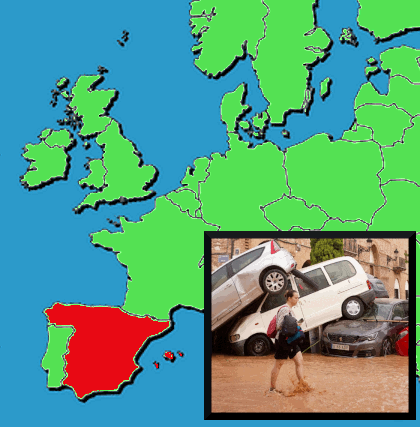
Circle the area on this map

C. Flooding hit Valencia on Spain’s eastern Mediterranean coast and Malaga on the southern coast. Scientists linked the Mediterranean’s high surface temperatures to the massive rainfall. The Bay of Biscay is on the Iberian Peninsula’s northern coast, and the Gulf of Cadiz is on the southwest. All of these waters are part of the Atlantic Ocean.
D. Spain is one of the countries that is most affected by the climate crisis in Europe, with 74% of the country at risk of becoming desert. The number of annual heatwaves doubled in a decade, and the heat is lasting longer and causing more deaths. Sea levels are rising all along Spain’s long coastlines threatening deltas and saltwater intrusion into the country’s dwindling fresh water supply.
C. All of thees civilizations colonized parts of the peninsula, but the Romans eventually conquered all of what is now Spain and Portugal and ruled the are for 600 years. Roman rule increased agricultural production with irrigation projects, some of which remain in use. The peninsula’s harbors also exported gold, wool, olive oil, and wine to Rome.
A. Muslim forces from North Africa began invading the Iberian Peninsula in 711, defeating Germanic rulers who has forced out the Romans about 300 years earlier. Muslim invaders controlled almost all of the peninsula by 781. Forces from northern Christian kingdoms slowly began conquering the territory with the last Muslim-controlled area surrendering to a newly unified Spanish kingdom in 1492.